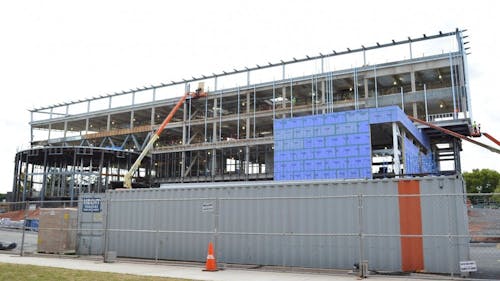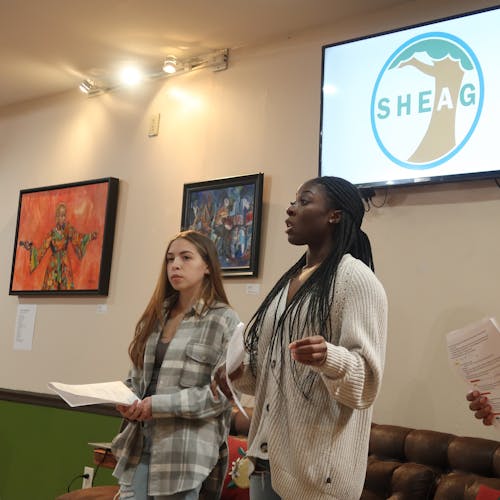Rutgers 2030 plan envisions a greener campus

The 2030 plan at Rutgers includes updates to University transit hubs, housing, student centers and athletic facilities, according to the master plan. With an overhaul of University systems set to take place, the new plan presents a unique opportunity for Rutgers to create a campus on the basis of environmental conservation.
Frank Wong, assistant vice <g>president</g> of University Facilities and Capital Planning and University planner, said that the Rutgers 2030 plan is built on a strong environmental foundation, from the perspective of protecting an open space.
Wong said the University hopes to reactivate and improve access to underutilized open space along the Raritan River and focus on building in areas already developed and increase the density.
He said they promote alternative transportation solutions, such as biking, walking and reducing energy usage by eliminating obsolete buildings and constructing more energy efficient buildings using green technologies.
“As far as construction, we adhere to the U.S. Green Building Council’s guidelines for LEED-rated Silver buildings, which are integrated into our design standards and construction guidelines, and collectively serve to reduce our overall carbon footprint,” Wong said. “We source materials within a 500-mile radius, and seek to use recycled materials in construction.”
In addition, Wong said the University made a major commitment to solar energy by implementing 33 acres of solar panels on Livingston campus.
According to the Intergovernmental Panel <g>of</g> Climate Change, the largest growth in carbon emissions has come from above all, building operations.
April Nicklaus, the chair of the New Brunswick chapter of NJPIRG and a School of Environmental and Biological Sciences junior, said the 2030 physical master plan focuses heavily on redevelopment and construction on campus.
“The University recognizes that many facilities are outdated and in need of improvement, and this provides a huge opportunity to begin building for the future. Not only is this an opportunity to create structures that better fit the needs of students, but the continued development on campus has the potential to usher in a wave <g>of</g> more efficient and 'green' buildings,” she said.
Nicklaus said many buildings at Rutgers run off of inefficient energy systems, but that it is not only about where energy is coming from but how much one uses, as well.
One of the clearest ways to reduce the University's carbon footprint is to not just transition to renewable sources but to use less energy in general, she said.
While Nicklaus acknowledged that providing building structures with more energy efficient systems is a challenge, she said that doing so on campus presents opportunities to rebuild a greener campus infrastructure.
Wong said the University is committed to remaining energy efficient during the actual process of construction by integrating stormwater management solutions, using green roofs and rain gardens to minimize runoff, orienting buildings to maximize solar energy usage, implementing recycled construction materials and replanting trees lost to construction.
The University Committee for Sustainability includes student representation, Wong said. And Energy Conservation Manager Michael Kornitas meets with student groups regularly to make sure all voices are heard.
“The building code is now written to be green and environmentally friendly so that it’s ingrained in our planning. For example, our standards embrace new technologies that decrease the amount of conditioned air that we exhaust through lab fume hoods in our new research buildings,” he said.
Nicklaus said the University plan focuses on developing a wider bicycling network around campus, which would reduce reliance on fossil <g>fuel-based</g> vehicle traffic, as well as help students get around campus more efficiently.
Nicklaus said fossil fuel reliant transportation plays a huge role in producing carbon emissions and transportation infrastructure, and the University’s master plan outlines goals for redeveloping infrastructure having to do with transportation.
She commends non-vehicle transportation, such as bicycling and walking, which can decrease a carbon footprint.
She also said a large part of the plan also focuses on increasing the efficiency of bus travel, which will hopefully decrease reliance on cars.
“Our hope is that sustainability will be kept in mind during the planning for actual building construction, to incorporate energy efficient systems and green building design … NJPIRG students (are) consistently working to have meetings and discussions with members of the University administration,” Nicklaus said. “We are hopeful that, with continually increasing support from the student body, faculty and student leadership, the administration will continue to further commit to sustainability and renewable energy on campus.”



